#Peter II of Russia
Photo
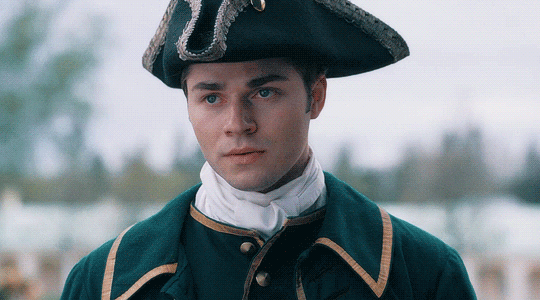
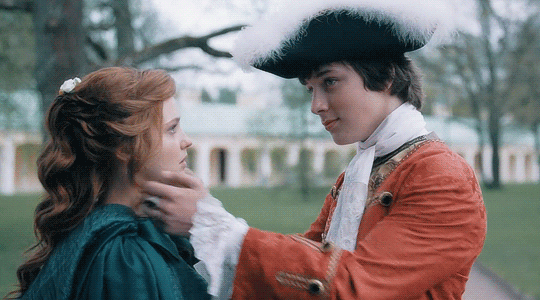
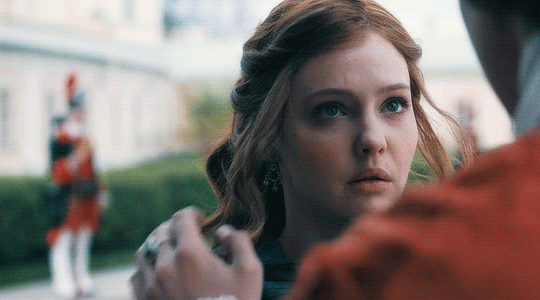
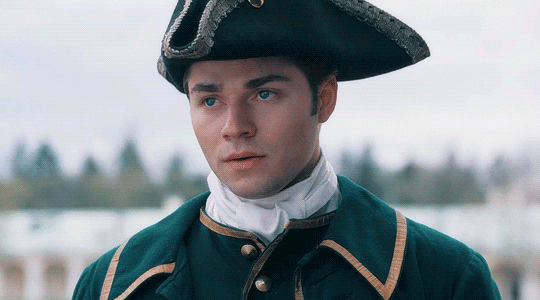
ELIZAVETA (2022)
#elizaveta 2022#elizaveta#tv series «elizaveta»#elizabeth of russia#elizaveta romanova#alexei shubin#peter ii of russia#yulia hlynina#kirill chernyshenko#russian history#russian tv series#periodedits#perioddramaedit#perioddramagif#russian period drama
88 notes
·
View notes
Text
Fellas, is it gay to sleep in your bff’s room while he’s forced to be on bed rest after getting run over by a horse?
#Peter ii of Russia#Ivan dolgorukov#I’m not kidding#this isn’t even the shows now#but an actual historical anecdote#op#history#Russia
0 notes
Text
petrushka<3
1 note
·
View note
Text
The traditional values

#russian history#history#russian empire#historical shitpost#historical memes#peter iii of russia#Peter III#catherine ii of russia#catherine ii#catherine the great#romanovs
38 notes
·
View notes
Text
Fabergé Eggs

Fabergé Eggs, perhaps considered one of the most famous examples of exquisite and luxurious craftsmanship to this day.
Fabergé eggs were originally commissioned by the Russian Imperial family in the late 1800s AD.
Tsar Alexander III (10 March 1845 – 1 November 1894) wanted a richly jeweled egg as an Easter gift for his wife, so Russian jeweler Peter Carl Fabergé (30 May [O.S. 18 May] 1846 – 24 September 1920) got to work and produced very first Fabergé egg in 1885 AD.
And like Easter eggs you may find hidden in your shrubs or gutters, these eggs were also intended to contain a surprise inside.
Initially, the first Fabergé egg was to contain a diamond ring, but after specific instructions given by the Emperor, the egg could be opened to find a ruby pendant instead.
Over the course of the next two decades, ten eggs were produced for the family during Alexander III’s reign, starting a dazzling tradition that his son Nicholas II (18 May [O.S. 6 May] 1868 – 17 July 1918) would carry on for his wife and his mother every Easter.
The popularity of eggs-travagant gifts spread well beyond the Imperial family, and soon, other wealthy families began commissioning their own eggs.
The eggs then began to represent great wealth and luxury that owning a Fabergé egg was considered a status symbol.
And with the skill level and time that it took to craft up just one Fabergé egg – up to one year per egg – it’s no surprise they come with such a high value.
The intricate Fabergé egg-making process began by creating a design for the egg and then the outer shell would start to come to life.
The team of goldsmiths would craft the eggs out of precious metals like gold or silver.
They were each decorated with intricate engravings, filigree work and other decorative elements.
And while his competitors used a standard palette, Fabergé wanted to experiment with more colors.
He created resplendent yellows, mauves, and all shades of greens — coming up with over one hundred and forty new colors.
Just as important as its exterior, the Fabergé egg’s interior was given just as much attention to detail.
A team of jewelers would work on creating a surprise to be hidden inside the bejeweled shell.
These surprises could be anything from miniature portraits of the recipients’ husbands to tiny replicas of famous landmarks.
The artists behind these miniature works of art were some of the best miniature painters, sculptors and engravers of that time who used a variety of material, including enamel, precious stones and even hair to create their work.
Finally, once all of the intricate pieces were complete, they were assembled by a team of skilled craftsmen to create the final product.
The egg was then presented to the recipient and would become a treasured family heirloom for years to come.
Unfortunately, the House of Fabergé was forced to close its doors during the Russian Revolution in 1917.
Fabergé and his family fled Russia.
Many of the Fabergé eggs were sold, lost or smuggled out of Russia during this time, but now, many of them are housed in museums like the famous Fabergé Museum in St. Petersburg, Russia.
However, history came full circle when in 2007, with new ownership and direction, the company announced the reunification of the brand with the Fabergé family.
This new chapter set the stage for a total revitalization of the Fabergé name and philosophy, which are in tune with its original values and spirit.
#House of Fabergé#Fabergé Eggs#Russian Imperial Family#Tsar Alexander III#Peter Carl Fabergé#Easter eggs#Tsar Nicholas II#Russian Revolution (1917)#Fabergé Museum#St. Petersburg#Russia#craftsmanship#family health#status symbol#jewelries#House of Romanov#Easter#Happy Easter#Easter Sunday#Resurrection Sunday#eggs
45 notes
·
View notes
Text

II have created several more interchangeable clips for bracelets. Barclay de Tolly has this effect of either snow or stars. I unsuccessfully cut a circle at Suvorov, but the edge glows in the dark (the same story with Fyodor Ushakov)
#peter the third#hello from russia#alexander suvorov#Fyodor Ushakov#Mikhail Speransky#Voltaire#friedrich ii#barclay de tolly
12 notes
·
View notes
Text

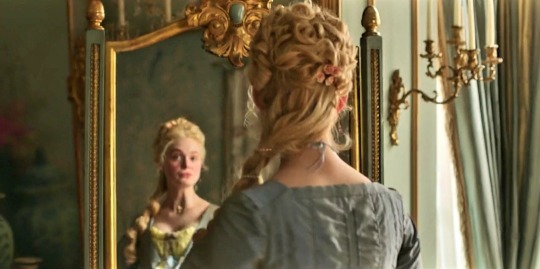

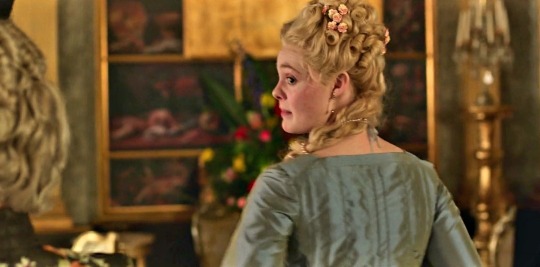



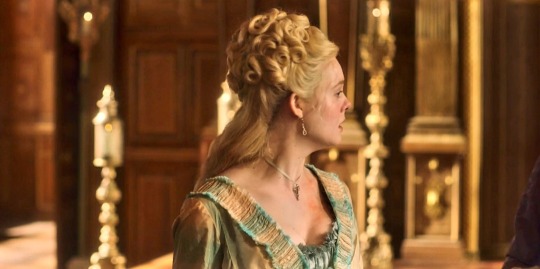
Catherine the Great hairstyles 🌸
#the great#catherine the great#elle fanning#perioddramaedit#the great hulu#the great tv#empress#costumedit#period drama#catherine x peter#catherine ii#catherine ii of russia#russian empress#hairstyle#hairporn#flowers#aesthetic#my edit
113 notes
·
View notes
Text
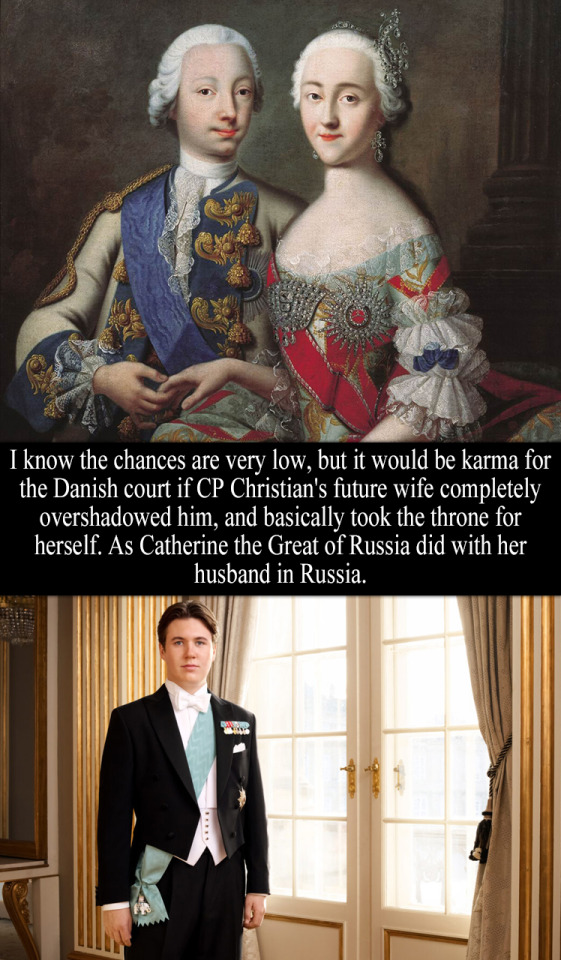
“I know the chances are very low, but it would be karma for the Danish court if CP Christian's future wife completely overshadowed him, and basically took the throne for herself. As Catherine the Great of Russia did with her husband in Russia.” - Submitted by Anonymous
10 notes
·
View notes
Text
In 1945, the Doctor (Doctor 7) and his companion Ace arrived at an army base (that was stockpiling nerve gas and using a super computer to decode intercepted German messages) near the close of World War II. Ace met her mother as a baby. The Doctor was caught up in all sorts of adventures involving Viking runes, Russian commandos, Haemovores and Fenric. ("The Curse of Fenric", Doctor Who, vlm 1, TV)
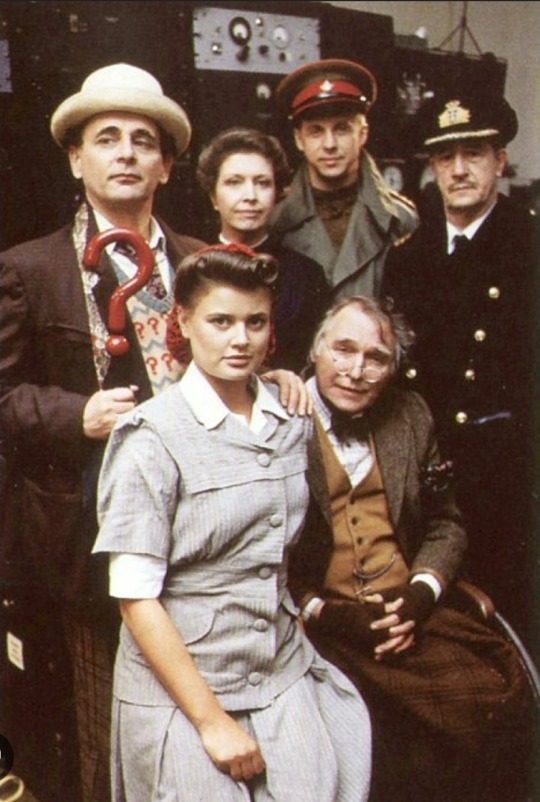
#nerds yearbook#sci fi tv#doctor who#dw#1945#world war 2#ww2#world war ii#wwii#time travel#vampire#nicholas mallett#ian briggs#doctor 7#7th doctor#sylvester mccoy#sophie aldred#ace#russia#dinsdale landen#alfred lynch#nicholas parsons#janet henfrey#tomasz borkowy#peter czajowski#marek anton#mark conrad#joann kenny#joanne bell#anne reid
11 notes
·
View notes
Text
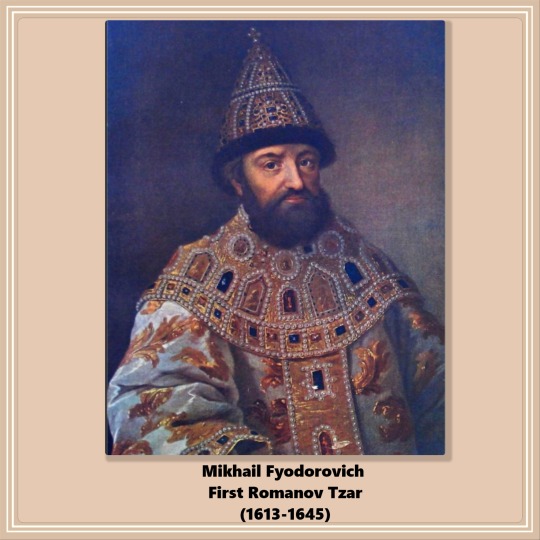






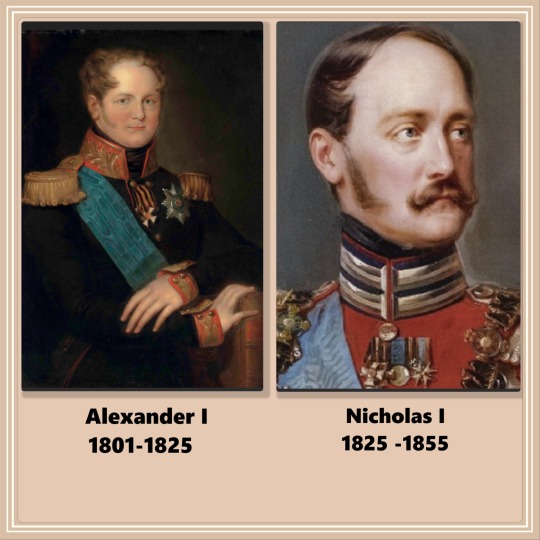

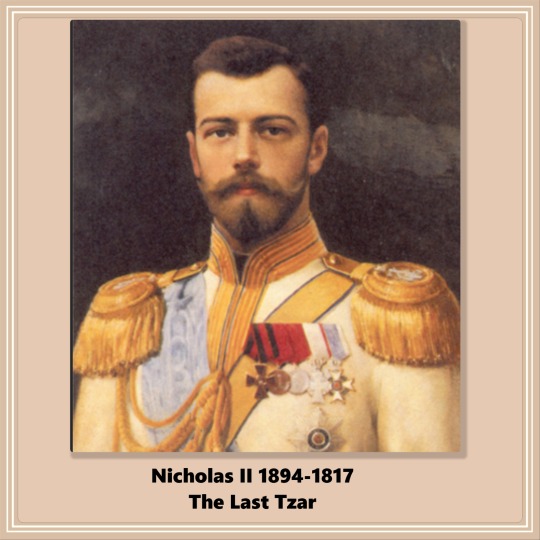
👑The Romanov Dynasty
The Grand Duchy of Moscow under Prince Ivan III was the first unified state on Russian territory. With him began the Rurikid Dynasty (the Rurikid had been around for a long time along hoards of tartars).
The Rurikid ruled from the 1400s until the 1600s. Ivan III can be considered the founder of Russia. While the Rurikid were in power, the Romanovs were boyars (nobles) in their courts. When the Ruriks became extinct, the Romanovs took over. The "Zemsky Sorbor" (a rudimentary parliament) elected Mikhail Feodorovich as the first Romanov Tzar.
The direct male line of the Romanovs ended with Elizabeth of Russia, who was childless. Her nephew Peter III, a member of the House of Holstein-Gottorp (a cadet branch of the German House of Oldenburg that reigned in Denmark), ascended to the throne and adopted his Romanov mother’s house name. Descendants after Elizabeth are sometimes referred to as "Holstein-Gottorp-Romanov."
The above is a gross oversimplification of a very complex course of events.
Highlights about each Romanov Tsar/Tsarina:
👑Mikhail Feodorovich (1613 - 1645): First Romanov Tsar
👑Alexei Mikhailovich (1645 - 1676): Encouraged trade and cooperation with Europe. Father of Peter the Great
👑Feodor III (1676 - 1682): Had very poor health and spent most of his reign in bed
👑Peter I and 👑 Ivan V (1689 - 1785): It was complicated. The two of them were Tsars under the regency of their older sister Sophia.
👑Peter I (1689-1725): Reformed Russia's politics, government, and culture. Made Russia a military power.
👑Catherine I (1725-1727): At the time of Peter the Great's death, the mechanism for succession consisted of the Tsar selecting his successor, but Peter did not elect one before dying. His wife became the Tsarina, but others governed through her.
👑Peter II (1727-1730): Peter's grandson; ascended the throne at 11 and died at 14. The "Privy Council" or "Soviet" ruled through him.
👑Anna Ioannovna (1730-1740): Daughter of Peter's half-brother Ivan. The Privy Council invited her to rule (wanting her to be a puppet), but she disbanded them and ruled herself successfully.
👑Ivan VI (1740-1741): One-year-old son of Ana's niece. She left the throne to him, expecting his mother to govern. Elizabeth, daughter of Peter the Great, deposed him (and his mother.)
👑Elizabeth Petrovna (1741-1761): Last Russian on the Russian throne; her twenty-year reign was successful.
👑Peter III (1761-1762): Grandson of Peter the Great and next in line for the throne after Elizabeth. Ruled for only half a year before being deposed by his wife, Catherine. He was murdered soon after the coup d’etat.
👑Catherine the Great (1762-1796): Her accomplishment went from the Empire’s territorial expansion to political development to the proliferation of sciences. However, the Empire had an enormous external debt by the end of her reign.
👑Paul I (1796-1801): Paul, the son of Catherine the Great and Peter III, became Emperor at 42 after the death of his mother. He started a lot of major military and political reforms. Paul was murdered in a coup d'etat. Paul decreed house laws for the Romanovs (the Pauline laws) – among the strictest in Europe – which established semi-Salic primogeniture and required Orthodox faith for the monarch and dynasts
👑Alexander I (1801-1825): During his reign, Russia defeated Napoleon's forces (which got as far as Moscow in their attempt to conquer Russia.) There was also great development in culture and arts.
👑Nicholas I (1825-1855): Paul I’s third son, younger brother of Alexander. Started railroad construction in Russia, boosting industrialization. Codified Russian laws and reformed finances.
👑Alexander II (1855-1881): His major reforms included the peasant emancipation of 1861, military reform, and the introduction of new types of self-governing village societies and more. Unfortunately, he fell victim to a terrorist after five attempts.
👑Alexander III (1881-1894): Russia didn’t enter any wars in his time. His domestic policy was conservative. He amended the Pauline laws. The economy flourished. But the revolution was brewing below the surface.
👑Nicholas II (1894-1917): His policies were unsuccessful. Established the first official Duma in 1905, but it was too little too late. With the advent of WWI, the Russian Empire ceased to exist. He abdicated. (gcl)
Sources:
Panov, A., Delaroche, P., & Abramuchkin, Y. (2021, July 31). The Complete List of Russian Tsars, Emperors, and Presidents. Russia Beyond. Retrieved June 20, 2023, from https://www.rbth.com/history/334065-complete-list-of-russian-tsars-emperors-rulers-presidents
#russian history#imperial russia#romanov dynasty#Nicholas II#Alexander III#Alexander II#Alexander I#Catherine I#Catherine II#Nicholas I#Paul III#Elizabeth Petrovna#Mikhail Feodorovich#Alexei Mikhailovich#Feodor III#Ivan VI#Peter I#Peter II#Peter III#Anna Ioannovna#Romanov Tsars#gcl
33 notes
·
View notes
Text

[text translation:
mobilization
news and politics
minecraft modes]
6 notes
·
View notes
Text
#polls#poll#russia#russian empire#russian federation#romanovs#rasputin#catherine the great#peter the great#tsars#tsar nicholas ii#boris yeltsin#vladimir vladimirovich putin#dmitry medvedev#Российская империя#Российская Федерация
2 notes
·
View notes
Text

The Princess of Orange Receiving Alexander II (1818-1881), Grand Duke and Heir to the Throne of Russia, in the Czar Peter's House in Zaandam, 17 April 1839
Artist: Christiaan Julius Lodewijk Portman (Dutch)
Genre: Portrait
Date: 1839 - 1840
Collection: Rijksmuseum Museum, Amsterdam, Netherlands
#portrait#princess of orange#alexander ii#czar peter house#netherlands#oil paint#russia#christiaan julius lodewijk portman#19th century art
1 note
·
View note
Text
Romanovs men edit💋
my edit made by using capcut!!
i'm in love help mee😩😜
They are all so handsome, gentle and clever
#my edit#capcut edit#capcut#my first love#romanovs men#george alexandrovich#nicholas i of Russia#alexander iii#Sasha#peter the great#tsar nicholas ii#alexei nikolaevich#grand duke mikhail pavlovich#grand duke mikhail alexandrovich#alexander ii
47 notes
·
View notes
Text

Imperial Crown of Russia or the Great Imperial Crown is one of the most outstanding examples of ‘regalia.’
Regalia is referred to as the emblems or insignia of royalty that survived through history.
It is a precious cultural heritage treasure — a well-documented and well-dated piece of jewellery.
Regalia jewellery pieces offer historians great insight into the gemstones used, their historical market values, and occurrences.
It also helps gemologists and jewellers to know how the gems were named and set on the piece of jewellery.
While royal crowns were usually made for individual rulers and later broken up, some of this royal regalia could be found in museums today.
Here are some interesting facts about one such royal artifact, the great Imperial Crown of Russia.
The Great Imperial Crown was made for Catherine the Great’s coronation, as the Russian Empress in 1762 AD, by Georg Friedrich Eckart and Jérémie Pauzié.
It is set with 4936 diamonds with a total weight of 2858 ct, 75 natural pearls, and a large 398.72 ct red spinel, historically known as “balas ruby,” which is among the largest ever reported in the literature, most probably from Badakhshan (today’s Tajikistan).
Imperial Crown of Russia was first worn by the Russian empress Catherine, followed by the subsequent seven emperors of her dynasty.
This royal regalia has remained a permanent fixture on the royal head.
This priceless artifact has been passed on to eight members of the Romanov family:
Catherine II, Peter III, Paul I, Alexander I, Nikolai I, Alexander II, Alexander III, and Nikolai II.
The Romanov dynasty survived till 1917, yet the crown publically appeared for the last time in 1906 at the opening ceremony of the first State Duma.
The crown was estimated to be worth $52 million in 1920.
The stones that the royal regalia comprises were sold off by the Bolsheviks and replaced in 1985.
Later in 1998, the crown was moved to the fund of Kremlin’s Diamond. Subsequently, it was declared to be priceless in a literal sense.
📷 : A modern replica version of the Imperial Crown was made in 2012 by Kristall-Smolensk, as part of the Jewellery project "Creation of Imperial Crown of Russia in Modern Interpretation" to celebrate the 400 years of the Romanov Dynasty and the 250 years of the Imperial Crown, as well as the 50th anniversary of the diamond industry in Russia.
Using white gold (original used silver) and 11,426 russian diamonds (original crown had 4,936 diamonds) from Alrosa with a total weight of 1180 ct, including 74 cultured pearls and a 384.71ct pear-shaped double rose cut purple tourmaline on top of the crown.
The spinel in the replica was replaced with a unique natural red tourmaline with a mass of about 400 karats.
#Imperial Crown of Russia#Great Imperial Crown#regalia#royalty#jewellery#gemstones#royal crowns#royal artifact#Catherine the Great#Georg Friedrich Eckart#Jérémie Pauzié#diamonds#pearls#red spinel#balas ruby#Catherine II#Peter III#Paul I#Alexander I#Nikolai I#Alexander II#Alexander III#Nikolai II#Romanov dynasty#Kristall-Smolensk#State Duma#Imperial Crown#diamond industry
11 notes
·
View notes
Text
APH Russia – Headcanons II

While it might not seem like it at first glance, Ivan is actually very well versed in the art of intrigue. He has witnessed palace death after palace death, coup after coup, the backstabbing and crassness of the Court of the Red Czar. Almost his entire life – first under the Mongols and Tatars, then under tsarist rule and then under totalitarian dictatorships – he has had his actions scrutinised and plucked apart, and he in turn has down the same with others. Thus, he learned to read between the lines, to tell what people’s facial expressions mean and how to analyse their behaviour.
This has also made him good at lying and keeping secrets. He has lived too long with being spied on that not being spied on is abnormal to him. To him, it is normal that others have ulterior motives and that all their kind words have to be taken with caution. His paranoia constantly runs high.
Thus, as a proof of loyalty, he demands that others show him their weaknesses and vulnerabilities. In his mind, if they know that he is at the longer end of the lever then they would be less inclined to betray him. After all, if they would rebel then it would be so easy for him to retaliate, and they wouldn’t want that, or not?
He on the other hand, takes a lot to warm up to people and even then he is slow to share secrets and show the more hidden aspects of himself. Sure, he can entertain guests and come up with the craziest group activities, yet that doesn’t mean he is willing to expose himself. Alcohol consumption makes him merrier, yet that doesn’t mean his tongue will loosen.

Generally has a very high alcohol tolerance. Although it is a stereotype, there is a lot of truth to it in its own way. The one nation that can win against him in a drinking contest is, surprisingly, Turkey. Besides the usual vodka or sweet, southern wines, Russia has a huge fondness for tea – tea is preferably drunk after every meal and when he does have guest, he’ll be quick to offer tea.
In dire times and as an alternative to alcohol, he boils his black tea until it is so strong, that it would give mere, ordinary mortals a heart attack. Others take meth or cocaine, he takes chifir.
Cigarettes are also a favourite of him, although he doesn’t smoke as much as he used to during the 50s. Before the 1920s he smoked via pipe. Might become more talkative if he shares tea, alcohol or cigs with somebody.
Generally can go from ballroom dancing, fancy dinners and high-end events to clubs and seedy bars. Russia is vast and old and thus multitudes, paradoxes and contradictions reside in Ivan.
Loves to tell stories. Really can be the entertainer in that aspect and rather just keeping it at the toast while drinking vodka, he’ll go on to tell anecdotes. Amongst humans he is careful not to reveal his true nature. Will never the tell the same story twice – he has too much experience with Peter III and later Stalin telling the same stories over and over again.
Also tells anecdotes – the long jokes with a punchline. His humour is very dark, and he isn’t above dragging somebody else through the mud for the sake of laughs. Got arrested multiple times during the Stalinist era and then always begrudgingly let go because he is the nation.
Prone to sarcasm and can be pretty scathing in that aspect. At time can be so subtle with the employment of this that it can take other people hours to realise he insulted them, if they realise it at all.
72 notes
·
View notes